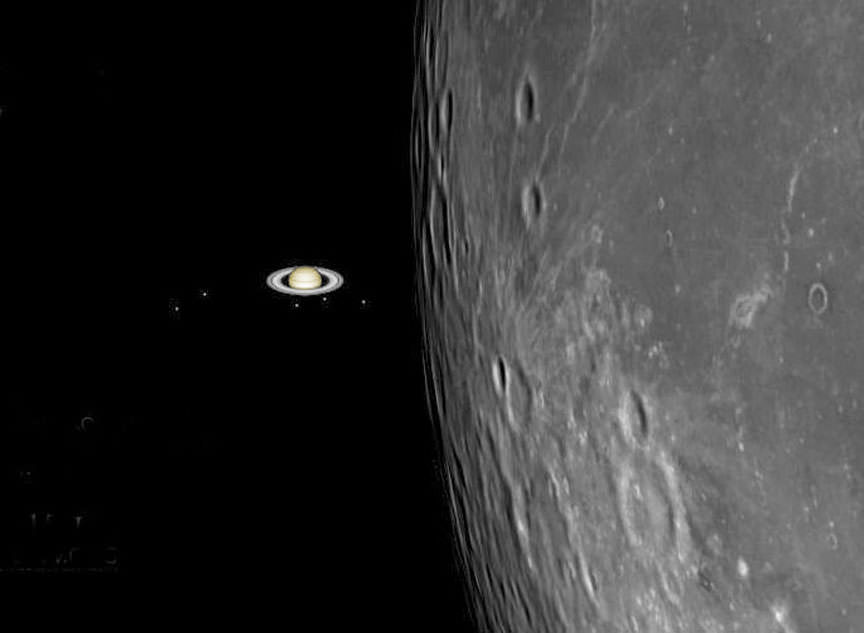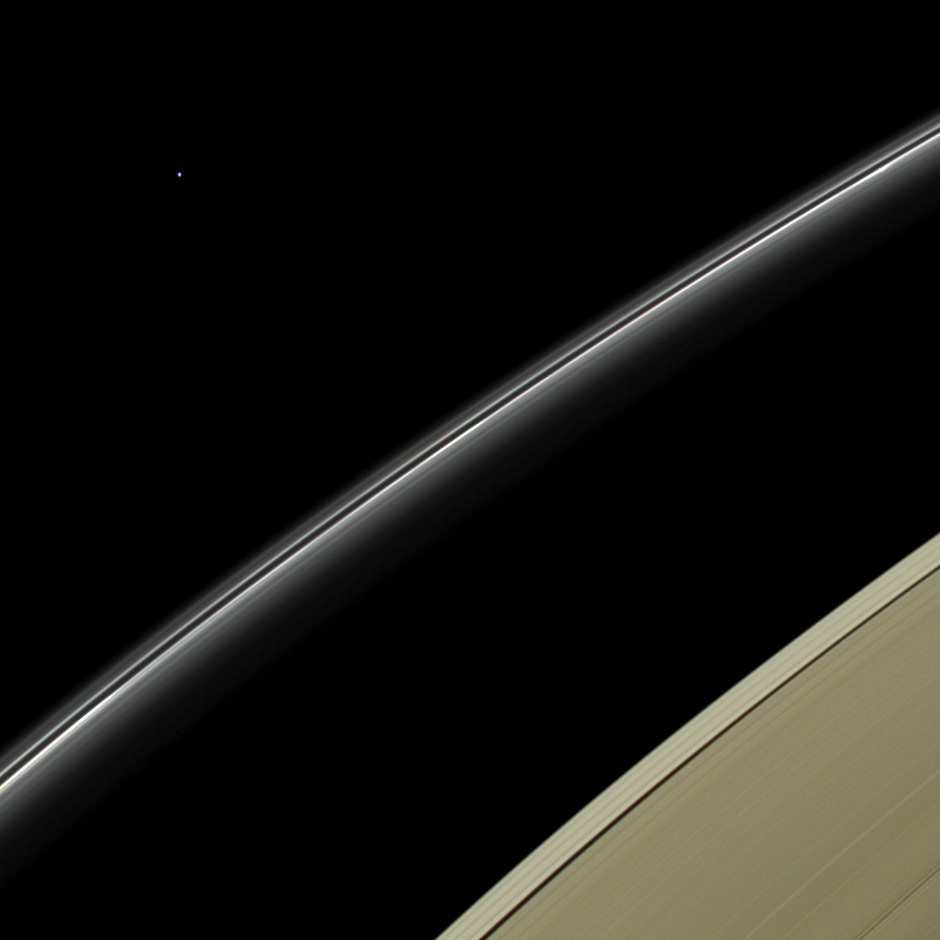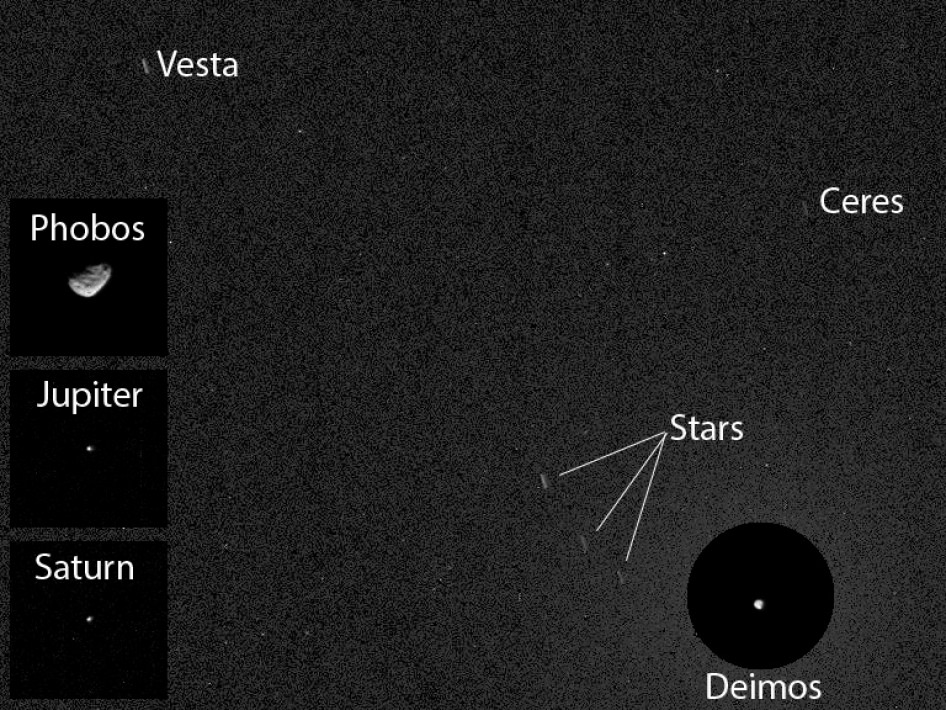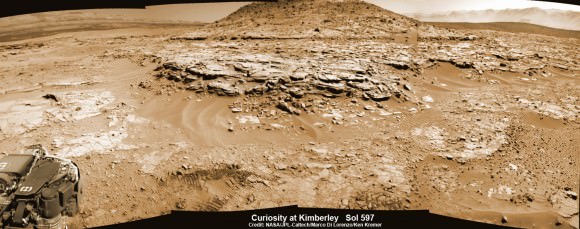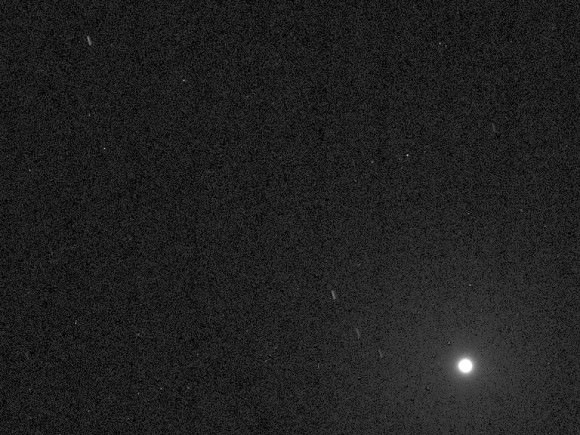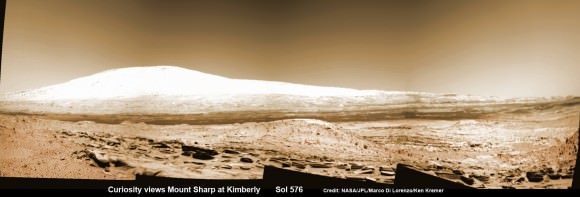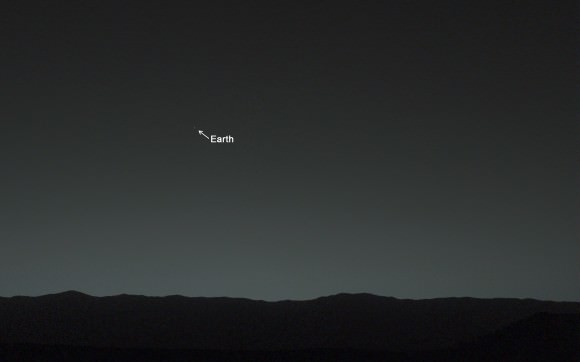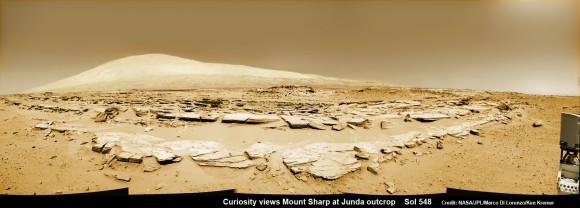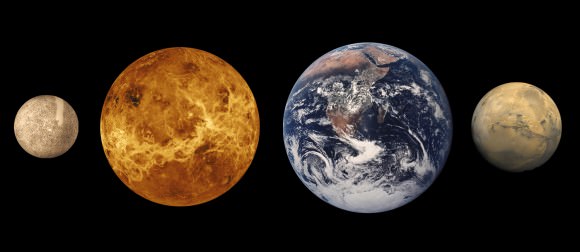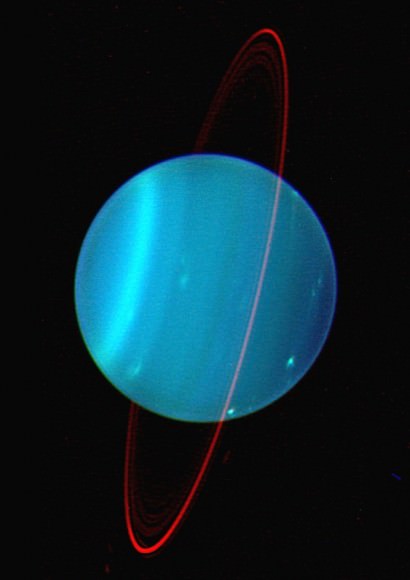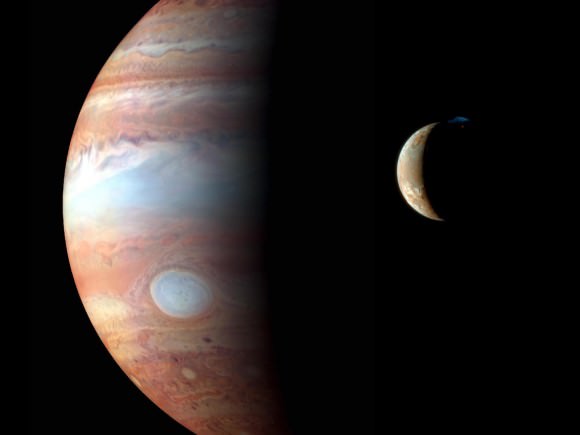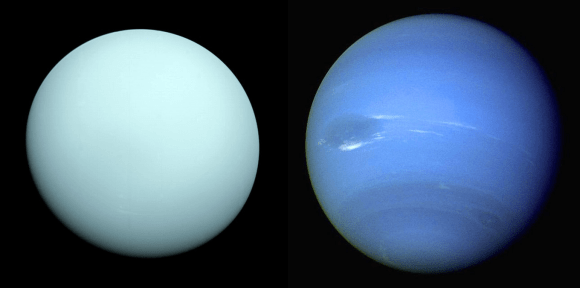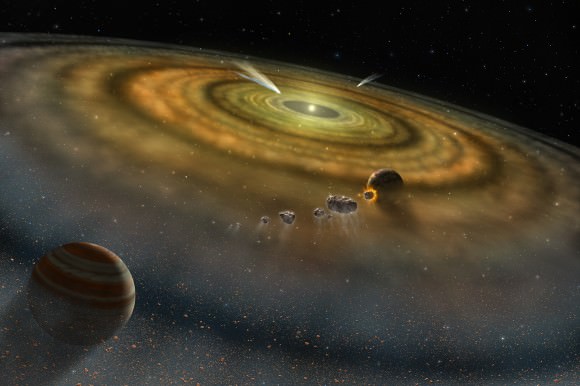Funny thing. Skywatchers are often just as excited to watch a celestial object disappear as we are to see it make an appearance. Early Wednesday morning (May 14) the Full Flower Moon will slip in front of Saturn, covering it from view for about an hour for observers in Australia and New Zealand. If you don’t live where the dingoes roam, no worries. You can watch it online.And no matter where you are on the planet, the big moon will accompany the ringed planet across the sky this Tues. night-Weds. morning.
Moon-Saturn occultation from Perth, Australia Feb. 22, 2014 captured by Colin Legg
Occultations of stars happen swiftly. The moon’s limb meets the pinpoint star and bam! it’s gone in a flash. But Saturn is an extended object and the moon needs time to cover one end of the rings to the other. Planetary occultations afford the opportunity to remove yourself from planet Earth and watch a planet ‘set’ and ‘rise’ over the alien lunar landscape. Like seeing a Chesley Bonestell painting in the flesh.
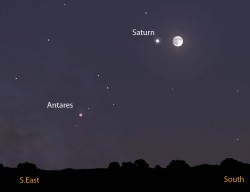
As the moon approaches Saturn, the planet first touches the lunar limb and then appears to ‘set’ as it’s covered by degrees. About an hour later, the planet ‘rises’ from the opposite limb. Planetary occultations are infrequent and always worth the effort to see.
Seen from the northern hemisphere and equatorial regions, the nearly full moon will appear several degrees to the right or west of Saturn tomorrow night (May 13). As the night deepens and the moon rolls westward, the two grow closer and closer. They’ll be only a degree apart (two full moon diameters) during Wednesday morning twilight seen from the West Coast. Northern hemisphere viewers will notice that the moon slides to the south of the planet overnight.
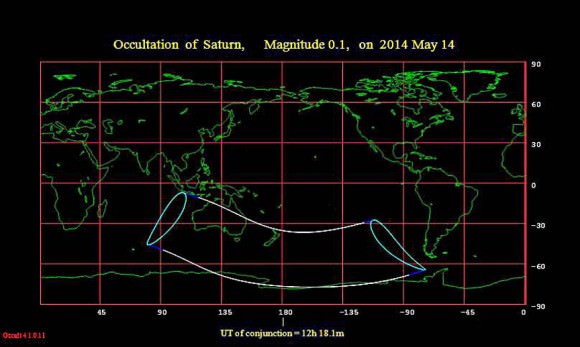
Skywatchers in Australia will see the moon cover Saturn during convenient early evening viewing hours May 14:
* 8:09 p.m. local time from Adelaide
* 9:05 p.m. Brisbane
* 8:50 p.m. Melbourne
* 8:53 p.m. Canberra
* 8:56 p.m. from Sydney (More times and a map – click HERE)
Before the occultation, Saturn will shine close to the moon’s upper right and might be tricky to see with the naked eye because of glare.
Binoculars will easily reveal the planet, but a telescope is the instrument of choice. Even a small scope magnifying at least 30x will show Saturn and its rings hovering above the bright edge of the moon. Stick around. About an hour later, Saturn will re-emerge along the moon’s lower left limb.
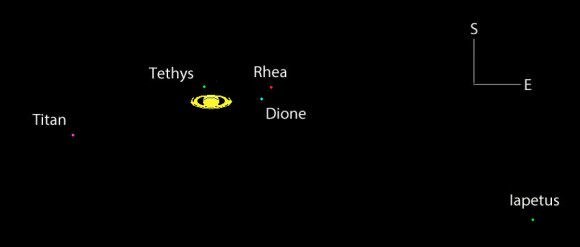
Meanwhile, back in the western hemisphere, we’ll watch the nearly full Flower Moon make a close pass of the planet. If you’ve had difficulty finding the celestial ring bearer, you’ll have no problem Tuesday night. Take a look at Saturn’s wonderful system of rings in your telescope – they’re tipped nearly wide open this year. For even more fun, see how many moons you can spot. And don’t forget, you can watch it online courtesy of astrophysicist Gianluca Masi. His Virtual Telescope website will broadcast the occultation live starting at 10:15 Universal Time May 14 (6:15 a.m. EDT, 5:15 CDT, 4:15 MDT and 3:15 PDT).

